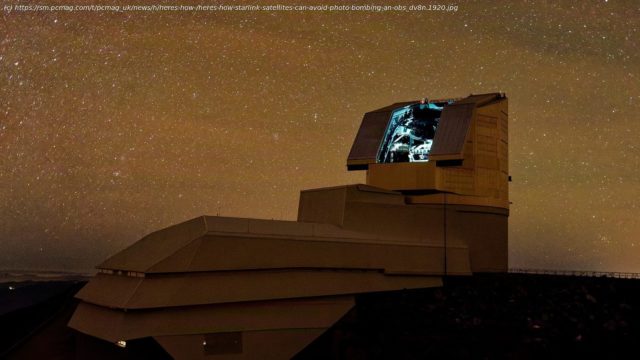SpaceX’s efforts to dim its Starlink satellites will likely be effective, at least for one major observatory. But the brightness concern about mega constellations hasn’t gone away.
SpaceX is spotlighting its efforts to limit Starlink’s impact on astronomy —this time through a research paper that a company engineer wrote with a team of astronomers.
SpaceX Vice President Michael Nicholls mentioned the paper while tweeting about the company’s ongoing efforts to reduce the brightness of Starlink satellites as they traverse the sky.
Low-orbiting satellites, including Starlink, can reflect sunlight in the night sky during the first few hours after dusk or before dawn. In response, SpaceX has made several changes to the satellites, including adding a mirror film and even painting them black. Overall, the upgrades have made the newer V2 Starlink satellites “darker” than older V1 models despite being larger in size, Nicholls said.
The research paper delves further, showing how the design changes to the Starlink satellites should prevent interference with the Vera C. Rubin Observatory in Chile, which features a massive telescope and recently came online.
The research paper comes from a SpaceX engineer named Forrest Fankhauser and three astronomers including J. Anthony Tyson, a professor at the University of California, Davis, and chief scientist at the Rubin observatory. The research examined how Starlink satellites, including version 1.5 and 2 models, might impact the massive telescope, specifically the “Legacy Survey of Space and Time,” a decade-long project to observe the night sky.
To measure the potential impact, the team developed a simulation using the telescope’s observing schedule and real-world data on Starlink satellites and their brightness. They then identified instances when the simulated satellites would surpass a magnitude of 7 on the apparent brightness scale —or what the astronomical community considers the threshold for when satellites can become bright enough to interfere with ground-based observations. (For perspective, a star with a magnitude of 6 to 7 would be at or just beyond the limit of what the naked eye can see.)
The paper found that some bright Starlink satellites will appear in the observations, but relatively rarely.






